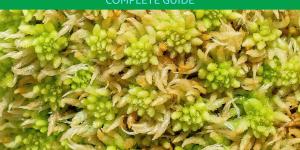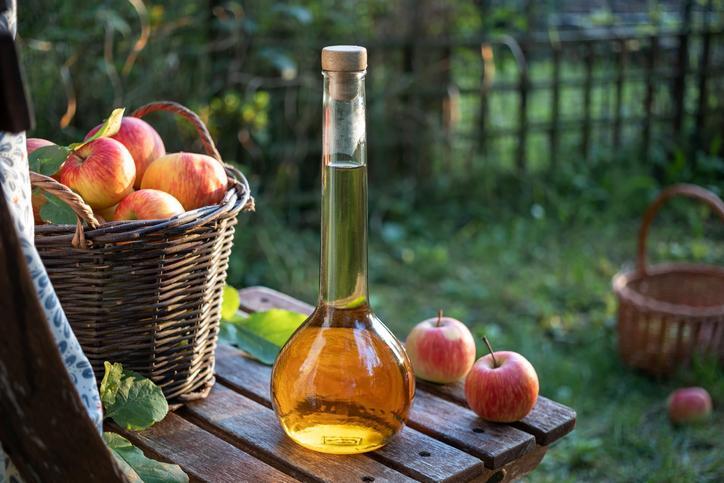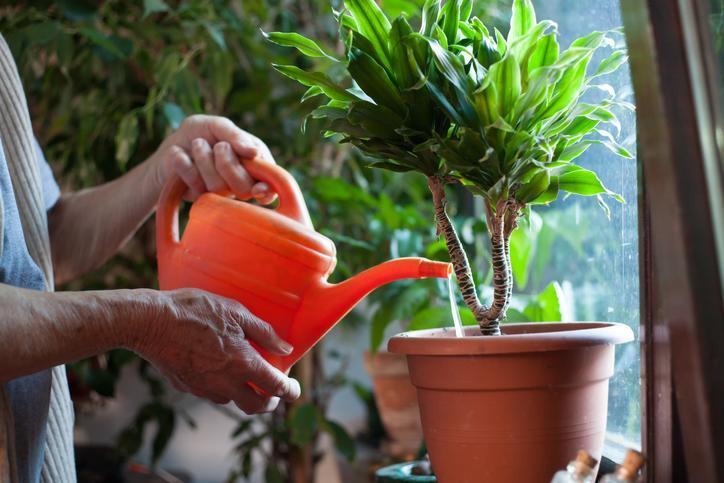How to Use Vinegar for Plants


Vinegar, a common ingredient found in most kitchens, has proven to be more than just a culinary staple. In the world of plant care, vinegar has emerged as a versatile tool, offering a range of benefits for nurturing and enhancing the well-being of our beloved plants. This humble ingredient, derived from the fermentation of ethanol by acetic acid bacteria, serves as a potent elixir with both culinary and non-culinary applications.
In the following article by thedailyECO, we'll explore five ways of you can use vinegar in your garden. Embrace sustainable gardening practices and cultivate a flourishing garden with this versatile household staple.
Properties of vinegar for plants
At the heart of vinegar's remarkable versatility lies acetic acid, a key component derived from the fermentation process. This organic acid, known for its characteristic tangy aroma and sharp taste, plays a pivotal role in vinegar's effectiveness in various applications, including plant care and household cleaning.
The acidic properties of acetic acid are the cornerstone of vinegar's antimicrobial prowess. Acetic acid disrupts the cell membranes of bacteria and fungi, hindering their growth and reproduction. This makes vinegar a natural disinfectant, effective against a wide range of microorganisms.
Not only that, but the presence of acetic acid also contributes to vinegar's ability to regulate soil pH. Vinegar's acidity can help lower soil pH, making it more suitable for acid-loving plants. Additionally, acetic acid can aid in breaking down soil particles, improving soil structure and aeration.
Furthermore, acetic acid is believed to enhance the absorption of essential nutrients by plants. By increasing the permeability of plant cell membranes, acetic acid can facilitate the uptake of nutrients from the soil, promoting plant growth and vitality.
Now that you know all the amazing properties of vinegar, do not miss this other article, where we discuss baking soda and its many applications.

How to use vinegar in your garden
1. Weed control
Vinegar's weed-controlling properties stem from its acetic acid content, disrupting weed growth when applied directly to leaves. An environmentally friendly alternative to synthetic herbicides, vinegar serves as a natural solution for managing unwanted vegetation.
Here's a simple recipe for a vinegar-based weed killer:
- Use white vinegar with a concentration of 5% acetic acid.
- In a spray bottle, mix equal parts white vinegar and water.
- Add a few drops of dish soap to the mixture. The soap helps the solution adhere to the weed leaves, making it more effective.
- On a sunny day, when there is no rain expected for a few hours, spray the vinegar solution directly onto the weeds. Be careful to avoid spraying it on desirable plants, as vinegar can harm them as well. If you're dealing with weeds in a garden bed, you can shield desirable plants with a piece of cardboard while spraying.
- Some stubborn weeds may require multiple applications. If the weeds are not completely killed after the first application, wait a few days and then reapply the vinegar solution.
2. Fertilizer booster
In some instances, vinegar can enhance fertilizer effectiveness by aiding the absorption of essential nutrients by plants. This synergy between vinegar and fertilizers contributes to healthier plant growth and development. However, it is important to remember that vinegar is acidic and can lower the pH of the soil, which may not be suitable for all plants.
If your soil is alkaline, and you want to create a more acidic environment for these plants, you can water them with a diluted vinegar solution. To do it, mix one cup of white vinegar with a gallon of water and use it to water these acid-loving plants sparingly.
Keep in mind that this should be done cautiously and sparingly, as excessive acidity can harm many plants. Perform a soil test to determine the current pH and adjust it accordingly.
3. Flower preservation
A small amount of vinegar added to the water in cut flower vases, can of flowers. This simple trick helps maintain vibrant and longer-lasting blooms. To do it, simply follow these instructions:
- In a clean vase, mix a solution of water, white vinegar, and sugar. A common ratio is 2 tablespoons of white vinegar and 2 tablespoons of sugar for every quart (4 cups) of water. The vinegar helps to inhibit the growth of bacteria, while the sugar provides nutrients to the flowers.
- Trim the stems of the flowers at an angle with a sharp pair of scissors or pruning shears. Cutting at an angle increases the surface area for water absorption.
- Remove any excess foliage or leaves from the stems that would be submerged in the preservative solution. Foliage left in the water can contribute to bacterial growth.
- Arrange the flowers in the prepared vase. Make sure that no leaves are submerged in the water.
- Every 2-3 days, change the preservative solution in the vase. Rinse the vase thoroughly before refilling it with a fresh mixture of water, vinegar, and sugar.

4. Fungus treatment
Vinegar's antifungal properties may assist in treating certain fungal issues on plants. However, caution is advised to prevent potential damage to sensitive plants. Understanding the proper application and concentration is crucial for effective and safe fungus treatment. If you want to use vinegar as a fungal treatment, follow these instructions:
- Mix a solution of white vinegar and water. A common ratio is one part white vinegar to three parts water. For example, if you use one cup of vinegar, mix it with three cups of water.
- Apply the vinegar solution in the morning or late afternoon when the sun is not too intense. This allows the solution to dry on the leaves before evening and minimizes the risk of leaf burn.
- Before applying the vinegar solution to the entire plant, test it on a small area to ensure that your plant doesn't have an adverse reaction.
- Use a spray bottle to apply the diluted vinegar solution directly to the affected areas of the plant. Pay attention to the leaves, stems, and any other parts showing signs of fungal infection.
Depending on the severity of the fungal issue, you may need to repeat the treatment every 7-10 days until the symptoms subside. Monitor the plant closely for any signs of stress or damage.
Keep in mind that not all plants tolerate acidic treatments well. Some plants, particularly those sensitive to acidity, may suffer from leaf burn or other negative effects. Always start with a more diluted solution and observe the plant's response.
5. Deterrent for certain animals
The strong odor of vinegar acts as a repellent for certain animals, providing a natural deterrent against potential damage to plants. This eco-friendly method adds an extra layer of protection in the garden.
Here are a few ways you can use vinegar as an animal deterrent:
- Spray solution: mix a solution of equal parts white vinegar and water in a spray bottle. Spray the solution on surfaces or areas where you want to deter animals. This can include the perimeter of your garden, around trash cans, or on plants you want to protect.
- Soak cotton balls: soak cotton balls in undiluted white vinegar. Place the vinegar-soaked cotton balls in strategic locations around the areas you want to protect. The smell of vinegar may deter animals.
- Vinegar-soaked cloth strips: dip strips of cloth in a mixture of white vinegar and water. Hang the vinegar-soaked cloth strips around the garden or near areas where animals are a problem.
- Vinegar and citrus peels: combine white vinegar with citrus peels (lemon, orange, or grapefruit). Allow the mixture to sit for a few days to infuse the vinegar with the citrus scent. Strain the mixture and use it as a spray or soak cotton balls to place around the area.
If you're a fan of eco-friendly solutions, you might find our other article interesting. In it, we discuss the top 10 homemade fertilizers for your garden.
If you want to read similar articles to How to Use Vinegar for Plants, we recommend you visit our Plant care and cultivation category.







